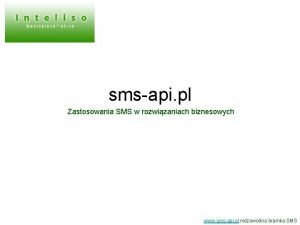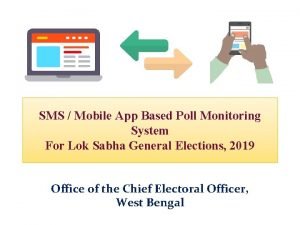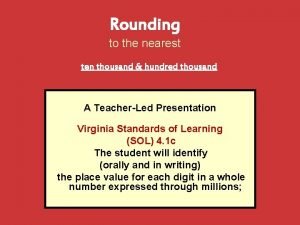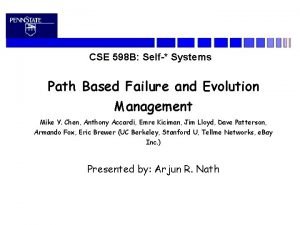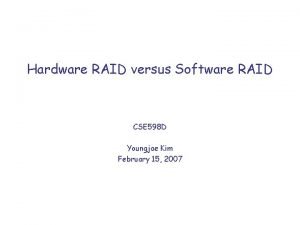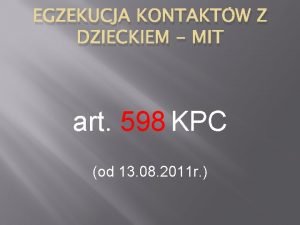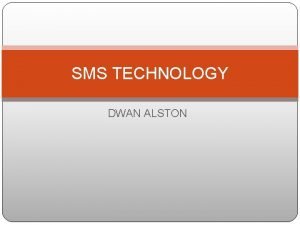Welcome to 2017 Ocean Optics Class SMS 598









- Slides: 9

Welcome to 2017 Ocean Optics Class SMS 598: Calibration and Validation for Ocean Color Remote Sensing, 10 July – August 4 th 2017 Instructors: Emmanuel Boss – UMaine Curt Mobley – Sequoia Scientific Collin Roesler – Bowdoin College Ken Voss – U. Miami Jeremy Werdell, Ivona Cetinic – NASA Goddard TA: Nils Haentjens– UMaine +Help from: Jordan Snyder, Ali Chase, Jim Loftin – UMaine John Hedley – Numerical Optics Ltd. Sean Bailey – NASA Goddard http: //misclab. umeoce. maine. edu/Ocean. Optics. Class 2017/

Welcome to Maine facts: Population (2016): 1. 33 million Coastline: 5300 miles Area: 35, 387 miles 2 + 4, 523 miles 2 of inland waters. Seasons: Tourist, Foliage, Ski, & Mud (some further subdivide it according to prevaling pests). Welcome to Maine

History of the Ocean Optics class 1985, 1987, 1989, 1995, 1998, 2001, 2004, 2007, 2011, 2013, 2015 and now 2017. This is 12 th class in 32 years. Mary Jane Perry and Ken Carder started the course in 1985, Friday Harbor Lab; Collin Roesler was student in 1987, TAed in 1989, joined as an instructor in 1995. Curt Mobley joined as an instructor in 1995. Emmanuel Boss was student 1995, joined as an instructor in 1998. Ivona Cetinic was a student in 2004, joined as an instructor in 2013. Jeremy Werdell & Ken Voss joined as instructors in 2011. O(190) graduates, including Paula Bontempi at NASA Many graduates are leaders in their fields: Ray Najjar, Dennis Mc. Gillicuddy, Joaquim Goes and Heidi Sosik, to name a few.

History of the Ocean Optics class 1985, 1987, 1989, 1995, 1998, 2001, 2004, 2007, 2011, 2013, 2015 and now 2017. This is 12 th class in 32 years. Evolution and highlights: 1985: 1 spectrophotometer, 1 PAR light sensor, a version 1 in situ spectral transmissometer (2 meters long), a Turner benchtop fluorometer 1987: 1 Mac II computer with floppy drive, a borrowed Flow Cytometer 1989: ONR-sponsored symposium and book 1995: Hydrolight modeling 1998: Hyper-spectral overflights. Special Ocean Sciences session. 2001: Moved from Friday Harbor Lab (U Washington) to DMC, U Maine. 2007: Ocean Optics Web book (http: //www. oceanopticsbook. info/)

Key to the Class’s Success – Requirement for team work, each with his/her own focus. Collaborative environment. Learning community. Networking. Contribute to advancement of ocean sciences through ocean optics. First two weeks: animated lectures in morning; related lab in afternoon covering basic concept (e. g. NPQ), use of instruments and their calibration. Strong emphasis on relating optical signal to biogeochemical properties, critical thinking, calibration, critical analysis of data, hands-on experience. Cruise experience: collecting data in the field and processing it; learning how to submit documented data to Sea. BASS.

Logistics: safety, internet, meals, linen, Maine activities, etcetera Tim Miller – lab administrator Linda Healy – events coordinator Course schedule and syllabus Daily student reporting and summary of previous day’s lab Saturday morning – more on Student projects

INTRODUCTIONS – work with a fellow student over lunch; introduce that students to the class after lunch NAME of person you are introducing: WHERE she or he comes from (state/country and school or institution): THE PAST – something about the person’s background that resulted in him/her being in this course: THE FUTURE – something about her/his future plans, that he/she hopes the course will help in achieving: THE PRESENT – something that she/he wants to get of this course and how everyone else can contribute to this experience (it might be asking for help in something challenging): THE UNEXPECTED – something that we would never guess about the person’s activities, skills, or interests:

satellite Th em ot radiometry iva Th In-water optical properties; surrogates eo pt ics pr ob tio n real entity (cell, POC, etc. ) lem ecosystem; carbon cycle; climate system; fisheries; HABs; etc.

Sampling strategy must include appropriate spatial/temporal scales. Understanding marine biogeochemical cycles and ecosystems on regional-to-global scales requires calibrated, validated satellite ocean color data. Successful satellite cal/val depends on high quality, in-water measurements. Use measurement – measurement closure and measurements – model closure to reduce uncertainty.
 Difference between ray optics and wave optics
Difference between ray optics and wave optics Venn diagram of geometric optics and physical optics
Venn diagram of geometric optics and physical optics Sms api koszt sms
Sms api koszt sms Poll monitoring system app
Poll monitoring system app Hundred thousand ten thousand
Hundred thousand ten thousand A number rounded to the nearest hundred thousand is 400 000
A number rounded to the nearest hundred thousand is 400 000 Cse 598 advanced software analysis and design
Cse 598 advanced software analysis and design Evaluate the given postfix expression 6523+8*+3+*
Evaluate the given postfix expression 6523+8*+3+* Cse 598
Cse 598 598 kpc
598 kpc


